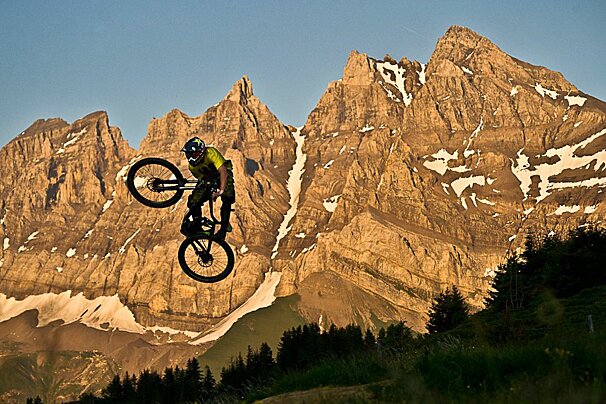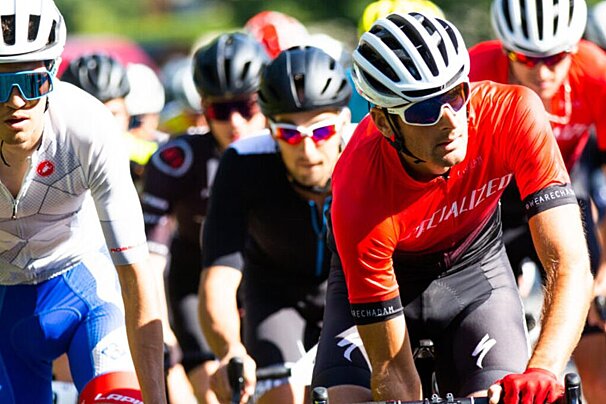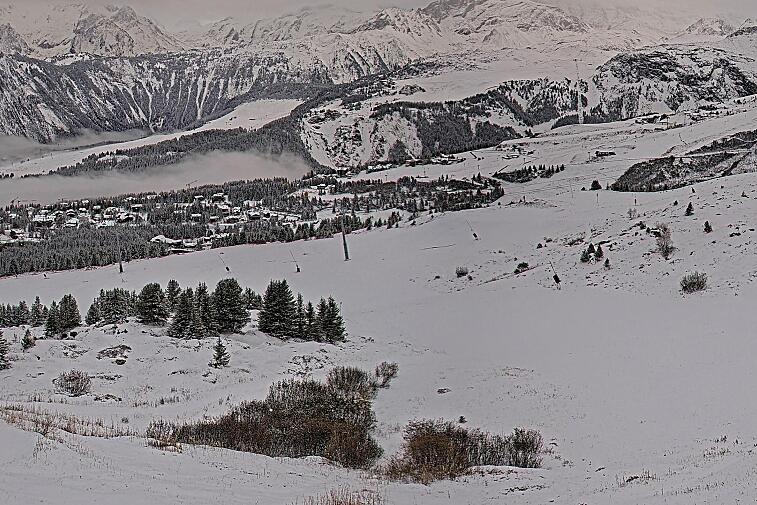How To...Dress for ski touring
Back Country Guides : Episode 2 - Kit
Ski touring is one of the best ways to enjoy the mountains. Far from the lift queues and ski school snakes, it is just you, fresh air, and the mountains.
It used to be that ski touring was only for advanced skiers who set off into the backcountry to find routes and chutes that recreational skiers couldn't get to. However, the evolution of fat skis, snowboards, lightweight apparel and ski hardwear have opened up off piste riding to more and more people and as a result, touring has become increasingly popular in recent years.
If you want to go touring, there are some very important basics you'll need to learn first. Basics that will seriously enhance your enjoyment of the sport and help to keep you safe when travelling out of bounds. At Skinets HQ we are but mere enthusiasts so we decided to recruit the help of the professionals and have teamed up with Guy Willett of Dream Guides in Chamonix to bring you a series of guides to introduce back country skiing.
First off you'll need to make sure you have the right kind of equipment and clothing - much of which is specific to touring and in some cases you might need to upgrade some of your regular ski wear. Remember that you will be walking more than you will be skiing so you'll be warmer on the way up than on the way down and temperature regulation is key in this sport. Planning is all important – your body is a machine and if you wait until you are too cold or too hot, then chances are you’re too late.
Starting from your feet and working up you'll need some ski specific socks that fit well and are not too thick. This might seem obvious but it is imperative - if your socks bunch up in your boots or your feet get so hot, they expand then you can expect blisters and misery to follow straight away! For your base layer, a snug fitting, moisture wicking thermal layer is ideal. This will keep you warm whilst simultaneously drawing sweat away from your body. Some fibres like cotton will absorb sweat and then when you cool down the moisture in your shirt will freeze leaving you with an icy layer next to your skin.
A midlayer fleece is where most of your warmth comes from. Although this shirt will be light weight it will keep you warm and it is much easier to remove and add many thin layers to achieve a comfortable temperature than to have all your warmth come from one heavy layer.
Over your fleece you should wear one of the essential pieces of touring/backcountry kit, your avalanche transceiver. This is absolutely essential for anyone heading off piste. Wear it under you jacket to secure it to your body but over your fleece to make it easy to reach in the event of an accident. And learn how to use it otherwise you and it are completely useless in the event of an emergency.
Your outer layer should, once again be light, breathable and well ventilated. Many of the leading ski and snowboard apparel manufacturers make off piste specific kit but the best gear is made by those with a specific freeride/ski touring and mountaineering focus. In our video Sophie is wearing kit from Swedish company Haglofs who make excellent outdoor adventure gear that is well fitted, practical, technical, durable – and looks pretty good too! What is most important is to make sure that whatever you choose is comfortable and fits you.
You should take both goggles and sunglasses when ski touring. Glasses are ideal for the walking/skinning section of your tour as they let plenty of cool air circulate around your face but if the snow starts to fall or the temperaturedrops on your ski down you'll be happy you brought goggles. The same applies for hats and warm gloves – you may not need them if you are hiking in benign conditions but you’ll certainly need them for the descent. As soon as you stop working, your body temperature drops incredibly quickly so never underestimate the need for warm gear when heading into the backcountry.
Next up is ski touring hardwear - you will need comfortable ski touring specific boots with an articulated heel that allows freedom of movement when walking but locks to provide a rigid downhill boot for the descent. Your skis will need to be reasonably lightweight but sufficiently wide so that they are suited to powder skiing. Ski and binding choice is a personal one and there will always be a trade off between size and weight. Be sure to do your research and remember that the set up you go for needs to be appropriate for the terrain you will be travelling in. You can get away with wider, heavier kit if you are just doing laps in the ‘slackcountry’ but if you are heading off on a multi day ski tour, you’d be wise to prioritise as light a set up as you can afford. For example, Sophie takes her fat Faction 3.Zeros which are 112m underfoot for short day tours but will opt for her narrower, lighter Faction Agents for longer hikes. Whatever set up you go for will require significant research and even a fair bit of trial and error before you find the right skis/binding/boot set up for you.
Extendable poles are handy in touring as you might find a lot of the time you are skinning up a hill across the fall line and want one pole longer than the other. If you can change the length of your poles then you can tailor them to suit the terrain and if you are split boarding you can stow them in your pack for the descent - but we'll get to that in a later episode.
Finally you'll need to take a bag and whether it’s an ABS avalanche airbag or just a regular ski specific pack, there are some essentials you'll need to put in it.
Firstly, you'll need a collapsible shovel and avalanche probe. These come in a number of different materials, shapes and sizes and some are better than others. Make sure your shovel is metal. Although you can buy plastic bladed shovels they are simply not as strong as the metal equivalent and since you need this kit in an emergency you don't want it failing you. Similarly probes come in various materials and perhaps more importantly lengths but anything under two metres is not long enough.
You should also carry a water bottle. You can use a bag system like Camelbak but the water often freezes in the tube and the bags are more likely to tear or break in the event of a fall than a plastic bottle. If you do go for a Camelbak style set up, remember to get yourself an insulated tube or else you’ll find yourself thirsty.
It's a good idea to carry an extra jacket for warmth as well as your gloves, goggles and a hat. Whether you go for a down or synthetic jacket as your extra insulated layer of choice, remember to make sure it is light, warm and packable. Suncream, snacks, a map, compass, headtorch and a first aid kit are also advised and don’t forget to bring your ski crampons for steeper and icier sections on the ascent.
All of this kit will fit into a ski daypack with a capacity around 30 litres. An optional but very sensible extra is also a helmet, these are easy to strap to your bag and are far lighter and more comfortable than they used to be. Take a look at our airbag and helmet review for all the latest gear on the market for this winter season.
Like all types of skiing, be it downhill, freestyle and carving your choice of ski touring equipment is very personal and it's probably best to visit a decent shop and ask advice if you are looking to buy new touring kit or read reviews on kit from people who have been touring for years.
The essentials are simple enough but the specifics are highly personal.
Touring is great fun and opens up a whole new world of possibilities and challenges. If you are new to it then start off slow and always take a guide. Not only will they help keep you safe but they are also excellent sources of knowledge. Just a couple of days spent in the backcountry with a guide will give you the opportunity to learn the basics for safe travel in the backcountry and practical tips for future tours.

![[itemref] lounge](https://cdm0lfbn.cloudimg.io/v7/_images_base_/image_uploader/photos/original/2103-1-eden-20_1_21030001_1000__wwatermark1363125858_1363125858.jpg?ua=1579868553&p=carousel)

























